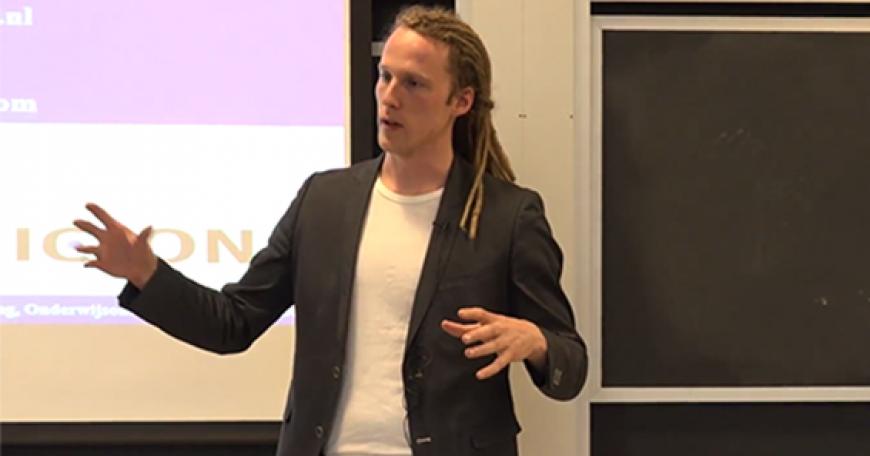
Tim van der Zee and Active Students in Online Courses
Teaching may be an ancient art, but the internet provides a whole new canvas on which to practice it. The massive open online course (MOOC) is a particular example of this nascent art form that provides unparalleled insight into student behavior. Rather than relying on student surveys or teacher evaluations, researchers and educators can directly access information about student behavior- especially relating to video watching patterns.
As Tim van der Zee emphasized during his April 12 xTalk, “videos are very often the core content,” the “main instructional tools” of MOOCs. In fact “students spend most of their time watching videos” in a typical online course of this variety. And videos provide that elusive information type that educational researchers could drool over- quantitative information about student activity! How many times was a video watched? Where in the video did a student start watching? Where did they stop? How do watching habits relate to course performance? This information can be easily collected and stored for perusal by educational researchers like van der Zee.
Another essential aspect of researching in MOOCs lies in the name- they are massive. MOOCs can support a huge number of students per class, unlike most classical courses. This provides that holy grail of education research- controlled experimental conditions in which to test hypotheses relating to student behavior. Does changing a video to make it more complex aid student performance? Less complex? Does adding subtitles aid learning? These are just a few of the factors van der Zee has examined thus far in his PhD studies.
However, for all their detailed methodology and carefully constructed experimentation, one confound touched all of their results. As van der Zee put it, “active students are active students.” To delve into what that means, let’s look at a specific example. In one study, van der Zee and his colleagues investigated whether adding different forms of active learning was an effective way to increase student performance. They separated students into different groups, some of which were asked to write a summary of each video they watched and some of which were not. Perhaps unsurprisingly, they found that writing video summaries did indeed result in higher grades.
But here’s the kicker: it’s likely those same students would have been high achievers even without the video summaries. In order to benefit from active learning techniques, one has to participate in them. Students who follow instructions and complete all the assignments - “active students” - are, in general, going to perform better than those who do not. What van der Zee and his colleagues likely did was to uncover a way for “good students to perform better.” Although useful, this was not the underlying goal.
Van der Zee left us with the true question behind the research: “How can we get more inactive students to become active students?” This is a fundamental question in education, perhaps even more so in the often optional MOOC courses. But, perhaps, MOOCs and the data they provide can allow researchers to study and address this question in ways never before possible.

